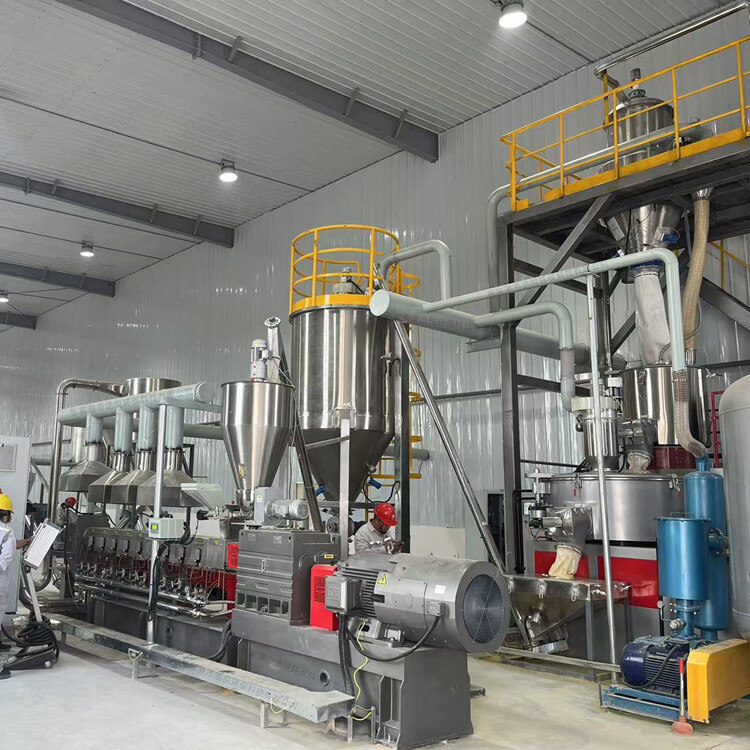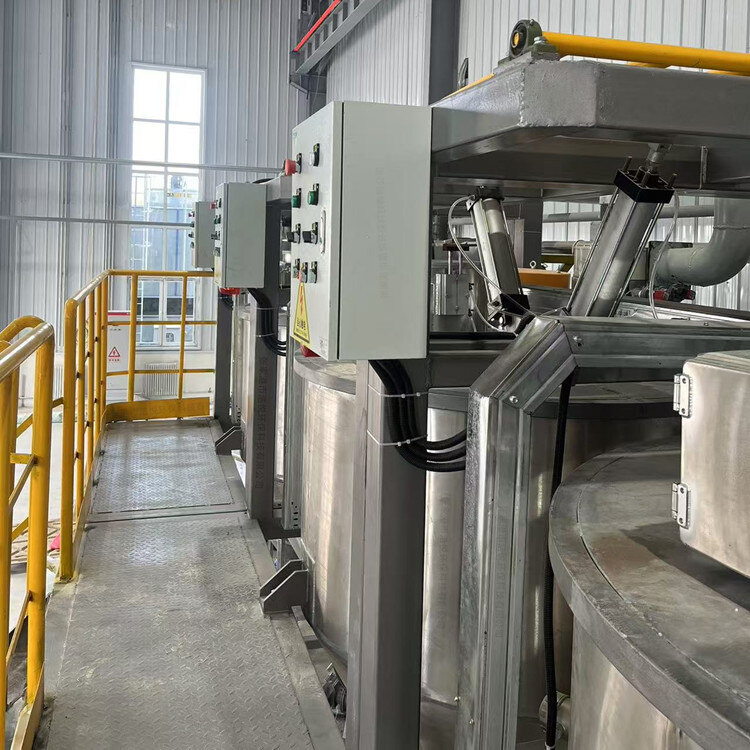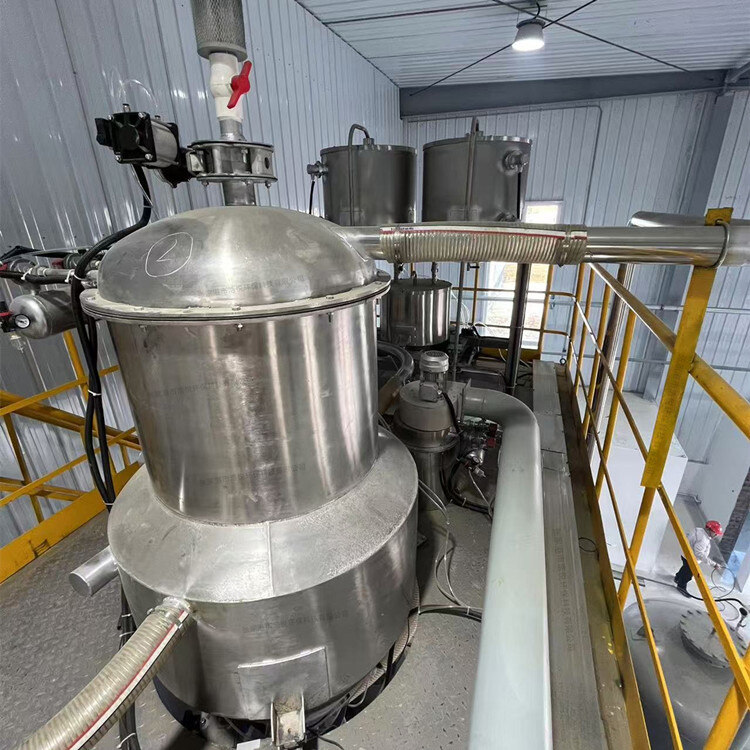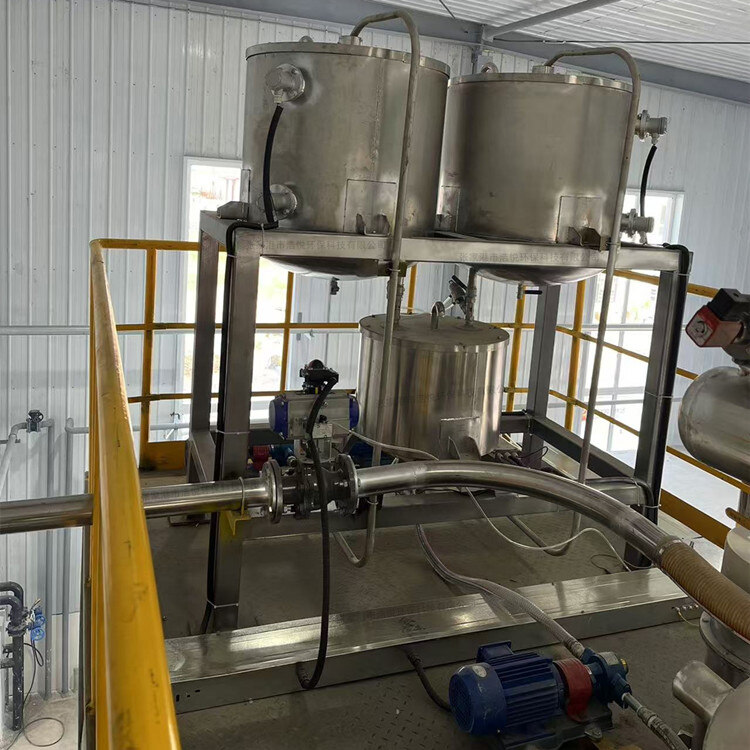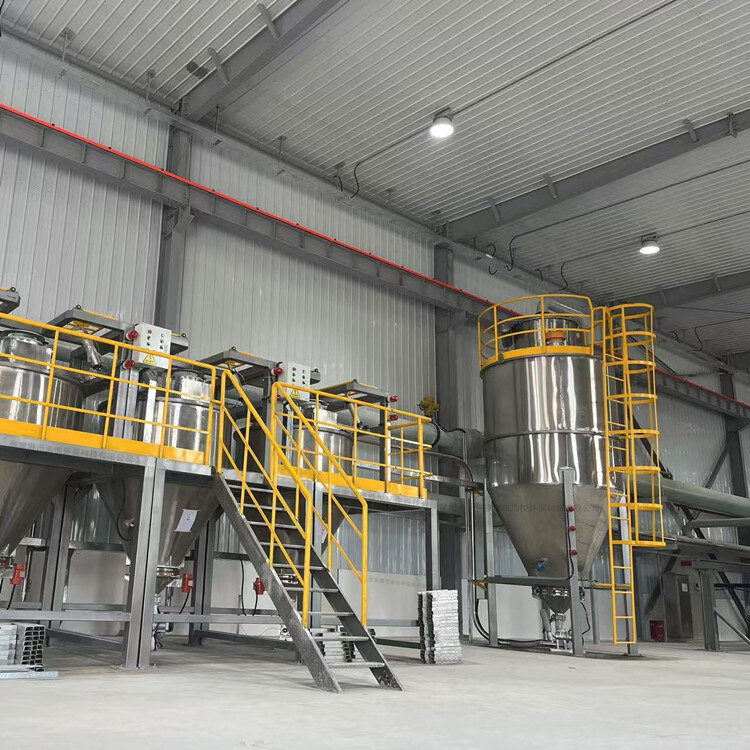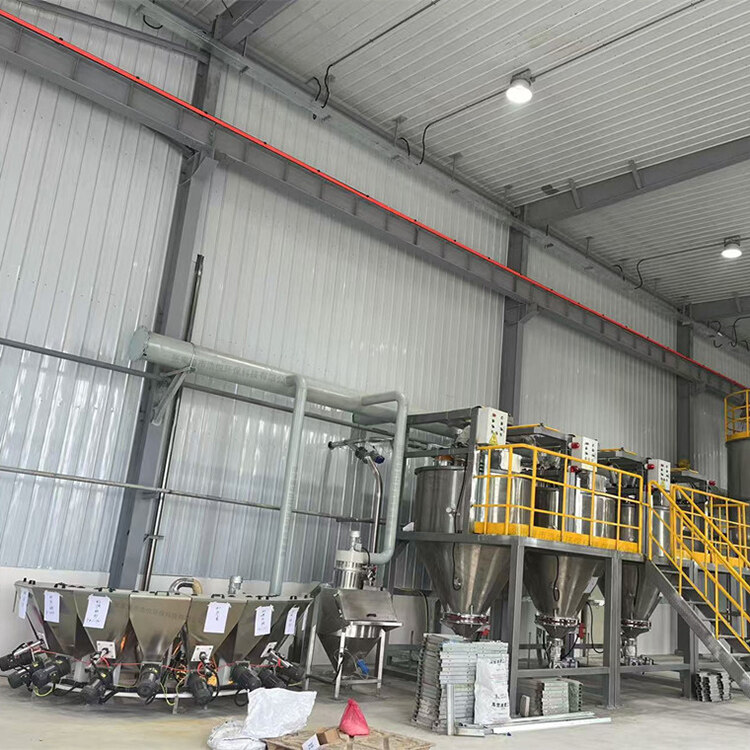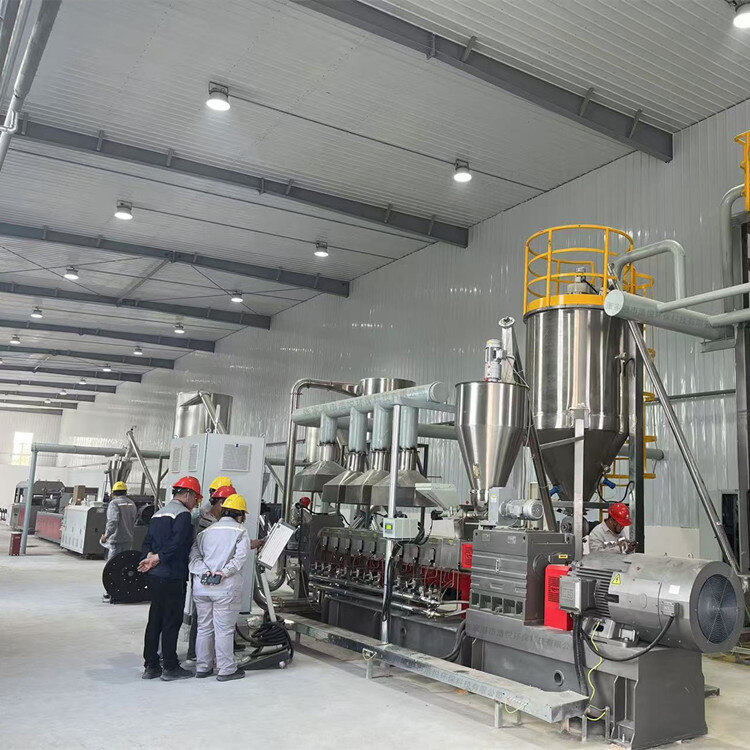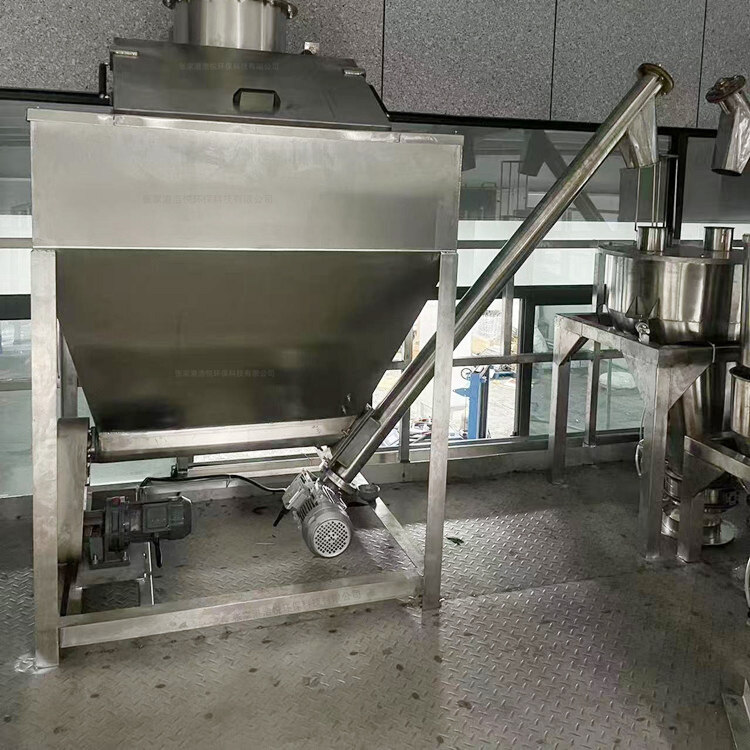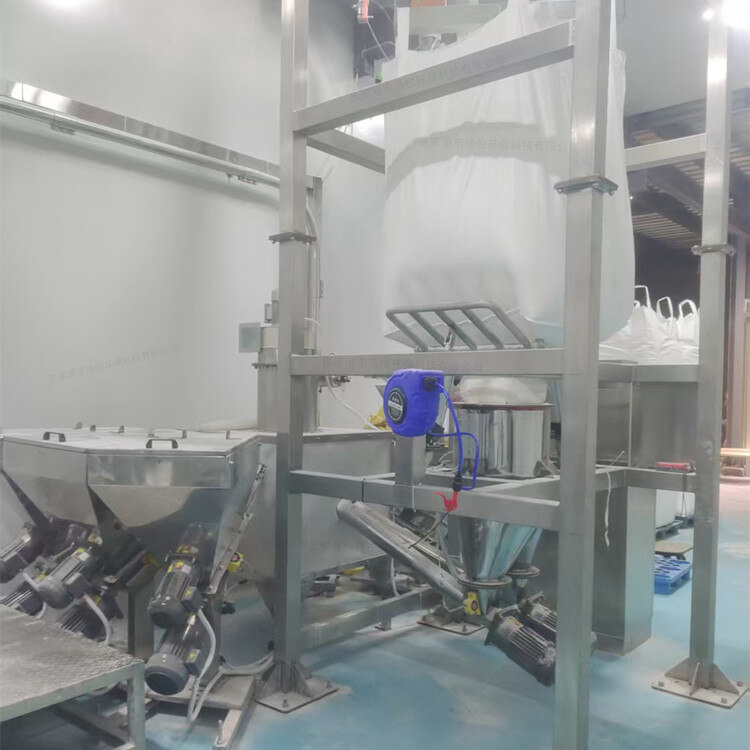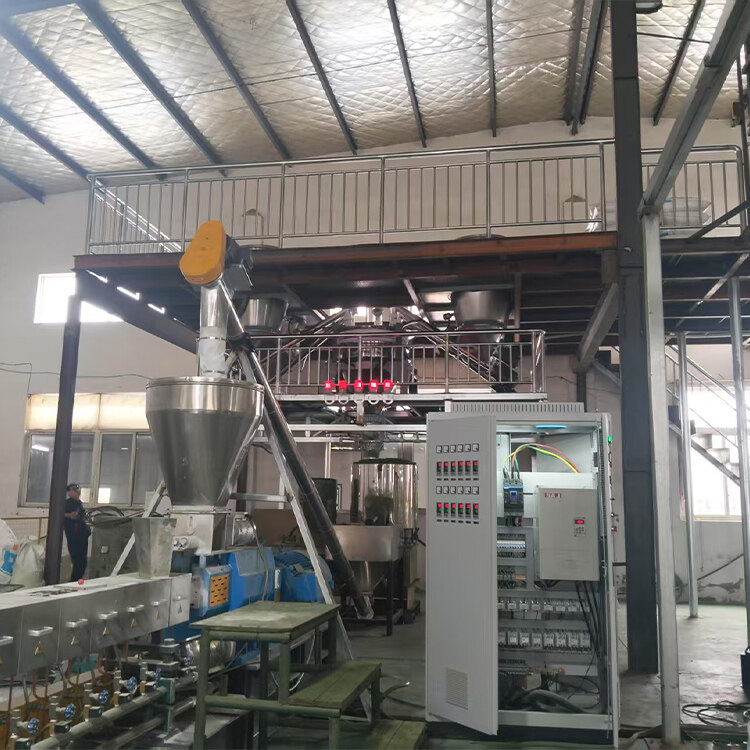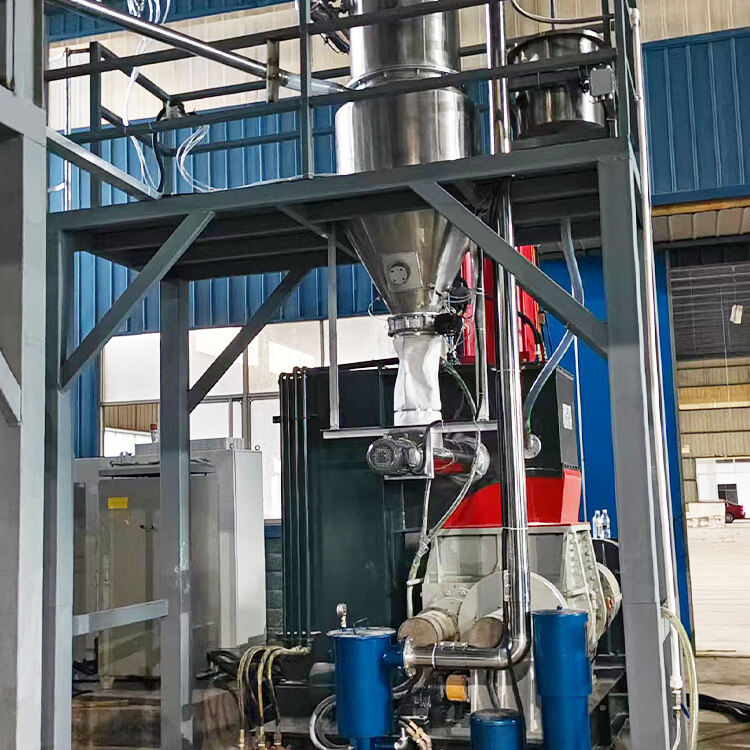- Introduction to automatic batching machine and fully automatic batching machine equipment
- The powder metering system tells you about the introduction of the mixing and drying machine
- 1000kg vacuum feeding machine
- Fully automatic small material batching system
- Research on Innovation of Automatic Weighing Machine Technology
- Design and operation of automatic batching system using PLC, industrial computer and frequency converter
Large material small material batching machine/liquid batching mixing system
- Category:Batching Plant
- Hits:134次
- Release Date:2025-06-23
- Share:
- Inquiry
- Details
1、 Large material small material batching machine: expert in precise blending of solid materials
The large and small material batching machine is mainly used for automated batching of solid materials such as granular and powdery materials. By accurately measuring and conveying the main raw material (large material) and auxiliary raw material (small material), it achieves production according to the formula ratio.
(1) Core functions and technological advantages
Graded precise measurement
Adopting a graded measurement strategy based on different material characteristics and proportioning requirements. For large materials with high proportion and flow rate, such as corn and soybean meal in feed production, and basic raw materials in chemical production, equipment such as belt scales and spiral scales are often used to achieve high flow conveying of 10-100 tons per hour, with a measurement accuracy of ± 0.5% - ± 1%. For small but crucial ingredients such as food additives and trace elements in feed, weight loss scales and micro screw feeders can be used with an accuracy of ± 0.1% - ± 0.3% to ensure accurate addition of auxiliary materials and avoid product quality being affected by small ingredient errors.
Multi material collaborative processing
The system can process 8-20 different materials simultaneously. Through the PLC control system, the start stop sequence and feeding amount of each silo are accurately controlled according to the preset formula, effectively preventing cross contamination of materials. In the flour ingredient scene of the food processing industry, this system can accurately ingredient multiple materials such as flour, sugar, salt, additives, etc. at the same time, ensuring consistency in product taste and quality.
Intelligent error prevention design
To address issues such as clumping and adsorption of small materials, vibration feeders and arch breaking devices are equipped to ensure smooth material transportation; During the process of conveying large materials, metal detectors are installed to promptly detect and eliminate foreign objects, prevent equipment damage, and ensure production safety and stability.
(2) System composition and workflow
Hardware composition
Storage unit: Large material warehouses are usually made of carbon steel or stainless steel, with a capacity of 5-50 cubic meters, used for storing large quantities of main raw materials; Small silos are mostly sealed stainless steel tanks, equipped with level sensors (radar, anti rotation, etc.) to monitor material inventory in real time for timely replenishment.
Measurement unit: According to the material characteristics and accuracy requirements, volumetric (such as screw feeder, disc feeder, low cost but limited accuracy) or heavy (such as belt scale, weight loss scale, high accuracy) measurement equipment is selected.
Conveyor unit: The belt conveyor is used for long-distance transportation of large materials, the screw conveyor achieves stable transportation of small materials in a sealed environment, and the bucket elevator completes vertical transportation of materials to meet the needs of different workstations.
2. Control process
The operator inputs the material formula through the touch screen, and the system automatically calculates the feeding time and speed of each silo; During the batching process, the weighing sensor provides real-time feedback data, and the PLC automatically adjusts the feeding amount based on deviations to ensure that the batching error of each batch is controlled within ± 0.5%; At the same time, the system records all ingredient data and can be integrated with the MES system to achieve full traceability of production quality.
(3) Application scenarios
Widely used in the feed industry, accurately proportioning large ingredients such as corn and bran with small ingredients such as vitamins and amino acids; In the building materials industry, the mixture of large materials such as cement, sand, and gravel with small additives is used for concrete batching; In the field of food processing, it realizes the automatic ingredients of large ingredients such as flour and oil and small ingredients such as essence and leavening agent in the production of biscuits.
2、 Liquid ingredient mixing system: a tool for precise proportioning and uniform mixing of liquid materials
The liquid ingredient mixing system is specifically designed for liquid materials such as water agents, oil agents, solvents, etc., to achieve proportional metering, transportation, and uniform mixing of multiple components, meeting the strict requirements of different industries for product quality.
(1) Core technology and equipment characteristics
Diversified liquid metering methods
Volume measurement: using electromagnetic flow meters, turbine flow meters and other equipment, suitable for measuring clean liquids, with an accuracy of ± 0.5%.
Quality measurement: Using Coriolis mass flowmeter, it can directly measure mass flow rate without being affected by temperature and density changes, with an accuracy of up to ± 0.1%. It is commonly used for measuring high-value raw materials.
Volumetric metering: With the help of plunger pumps, gear pumps, etc., it is suitable for metering and conveying high viscosity liquids such as ink and syrup.
Efficient mixing process
According to the viscosity of the liquid and the mixing requirements, two methods are used: dynamic stirring or static mixing. Dynamic mixing is equipped with anchor type, paddle type, turbine type and other agitators. For liquids with viscosity ranging from 1-10000 cP, by adjusting the speed of 50-300 rpm, a mixing uniformity of over 99% can be achieved; The static mixer relies on the blades inside the pipeline to cut the fluid, without the need for moving parts. It is suitable for low viscosity liquids below 100cP, with low energy consumption and easy maintenance.
Safety and anti-corrosion protection
Components that come into contact with liquids are made of corrosion-resistant materials such as 316L stainless steel and polytetrafluoroethylene (PTFE), which are suitable for corrosive environments such as acid and alkali; In flammable and explosive environments, equipped with explosion-proof motors and electrostatic grounding devices, strictly following explosion-proof standards such as ATEX and IECEx to ensure production safety.
(2) System operation process
Precision ingredient stage
According to the formula, the flow rate or weight of each liquid component is set, and the PLC controls the opening of the solenoid valve and metering pump. The material is accurately transported to the mixing tank through the pipeline; For high-precision scenarios, the feeding sequence of "high dose first, low dose later" is adopted to reduce the adhesion loss of low dose raw materials in the pipeline and ensure accurate proportioning.
Uniform mixing stage
The agitator adjusts the speed according to the characteristics of the liquid (such as whether it contains solid particles), and the mixing time is usually 10-30 minutes; The system monitors the mixing status in real time through online viscometers and conductivity meters, and automatically discharges materials after meeting the standards to ensure stable product quality.
Intelligent cleaning and disinfection
Equipped with CIP (In Situ Cleaning) system, the pipeline and tank are flushed with hot water and cleaning agent circulation, which complies with GMP standards and meets the strict hygiene requirements of industries such as medicine and food.
(3) Application Fields
In the production of coatings, precise proportioning of large materials such as resins and solvents with small materials such as pigments and additives ensures the color and performance of coatings; In the daily chemical industry, realize the mixing of large ingredients such as deionized water and surfactant with small ingredients such as essence and preservative in the production of shampoo; In the field of pharmaceutical preparations, high-precision measurement and mixing of solvents and active ingredients are carried out during injection preparation to ensure a mixing uniformity of over 99.5%.
3、 Comparison and Development Trends of Two Types of Systems
The large and small material batching machine focuses on solid materials and needs to deal with differences in material flowability, mainly using weighing and volumetric measurement methods; The liquid ingredient mixing system is designed for liquid materials, which are greatly affected by viscosity and density, and rely on flow meters and pump equipment. Both have their own focuses on measurement accuracy and mixing methods, but both are developing towards intelligence. By optimizing ingredient strategies through AI algorithms and utilizing the Internet of Things to achieve remote monitoring and fault warning, they continuously improve the automation and intelligence level of industrial production.


